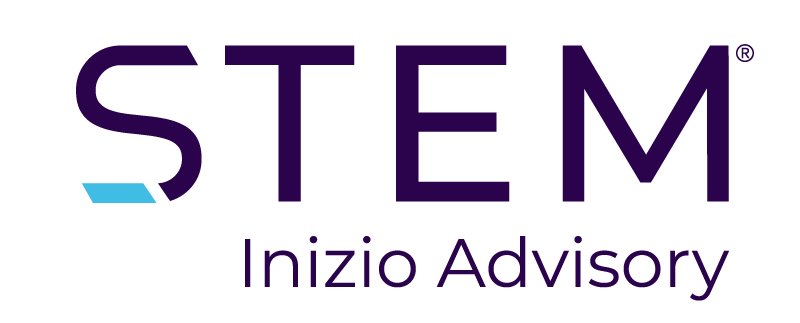Authored by: Adam Boucher, Head of Innovation and Product Development
In today’s dynamic pharmaceutical landscape, having a high level of strategic alignment and the flawless execution of this strategy is crucial for life sciences companies aiming to establish a competitive edge at every stage of a product’s life cycle. One of the most powerful tools at their disposal to help enable this is to clearly understand the dynamic between physicians and field teams, and how these interactions impact the overall customer experience.
In this article, Adam Boucher, Head of Innovation and Product Development at STEM Healthcare, part of Inizio Advisory, discusses the importance of aligning the experience of a pharmaceutical brand’s field team with feedback from physicians. Boucher describes the unique offering of HCP360° and explains how, by encompassing customer experience feedback, it is possible to redefine the customer journey.
The gateway to strategic insights: Listening to physicians
The ability to obtain insights from in-person field team engagements with physicians is essential to a company’s success in the pharmaceutical industry. These understandings give the company a window into how physicians perceive and engage with its teams and brands, laying the foundations for strategic decision-making and campaign iterations. Identifying any gaps or unmet needs between what field teams are communicating, and what physicians are wanting from these discussions, can prove vital in ensuring that brands are continuously refining their customer-centric approach.
The challenges around delivering a positive customer experience
The importance of understanding customers’ needs is not a new concept in the pharma industry. The goal to achieve more meaningful and relevant engagements that enhance the customer experience is at the heart of many processes, but there are challenges associated with realizing this aim:
- Accessing healthcare professionals (HCPs) and getting their attention: Navigating access to HCPs has become more difficult. Many stakeholders require HCPs’ attention, with the scramble for their engagement rising to unprecedented levels. It can therefore be difficult to obtain HCPs’ time to capture their feedback.
- Showcasing information sources: HCPs have a plethora of resources and potential information sources available to them. With so much information available, it can be difficult to stand out as a source.
In the race for delivering the best customer experience, it is essential to understand what customers — physicians and other HCPs — value. Although digital data, generated by analytical platforms, is no doubt of some use, especially to understand online behaviors, a significant gap exists around in-person interactions with field teams, especially regarding customer experience and physicians’ perspectives.
The benefit of in-person field team interactions
Field teams occupy a unique position, acting as the keystone linking in-person interactions with technological solutions. Field teams are well-positioned to provide a detailed, curated and connected experience for customers. They can be the ultimate customer experience orchestrator, possessing real-time knowledge of the HCP and therefore understanding the most effective channels, topics, and timing for content delivery.
A recent study found that the average open rate for emails sent by field team members was 35%, compared with just 3% for emails sent from corporate headquarters. Additionally, the fact that 66% of physicians actively seek out field team interactions further highlights their significance [1].
Revolutionizing insights from field teams and engagement with HCPs
Intending to increase visibility into the customer experience, a methodology that is gaining traction within the sector involves in-person observations of engagements, subsequent feedback from field teams and post-interaction engagement with HCPs.
A typical approach could consist of a 5-10 minute in-person interview, with an online alternative for time-pressured HCPs, containing questions with scores from 1 to 10 and HCPs’ rationale to explain each score. A key area of focus in these reviews must be to gather insights from the customer into the interaction itself, for example:
- How valuable was this discussion, and what specifically was of most value?
- What were the key takeaways or topics from the discussion, and how relevant were these to you?
- How could future interactions be further improved to better meet your needs?
This approach creates insights that allow for the optimization of customer experiences, ultimately boosting brand performance.
Anecdotally, key findings on some of these surveys to date show real differences between field team perceptions of the customer experience and HCPs’ direct feedback. These differences emphasize the need for accurate and immediate customer insights to fine-tune engagement strategies.
A blueprint for success
In-person field team interactions are essential when optimizing customer experiences in a landscape that is both competitive and time-pressured. Pharma companies that embrace the insights and structure brought by STEM Healthcare remain well-positioned to enhance every aspect of their customer experience.
By seamlessly integrating customer feedback into strategies, content and messaging, brands can enhance every area of the customer journey and experience, ultimately driving brand performance to new heights.
Contact us to find out how STEM can enhance brand performance.
References:
- Veeva. 2023. Guide to digital HCP engagement. [Online]. Available from: https://www.veeva.com/resources/guide-to-digital-hcp-engagement/. [Accessed 22 August 2023].

